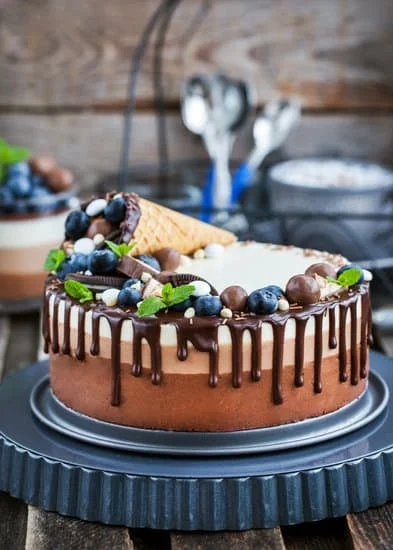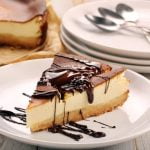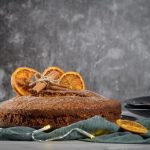Piping gel is a versatile and essential tool in the world of cake decorating, allowing bakers to create beautiful and intricate designs on their cakes. In this article, we will explore how to use piping gel in cake decorating, from its basic applications to more advanced techniques. Whether you are a beginner or an experienced baker looking to enhance your decorating skills, understanding the uses and benefits of piping gel can elevate your creations to the next level.
But what exactly is piping gel? Piping gel is a translucent, edible substance that is commonly used in cake decorating to create various effects such as writing, outlining, and glazing. Its smooth consistency makes it easy to work with, while its clear or colored variations offer endless possibilities for design. In this introduction to piping gel in cake decorating, we will delve into its uses and how it can be applied to achieve stunning results on your cakes.
Throughout this article, we will discuss the different types of piping gel available – clear versus colored – and their respective uses in cake decorating. Additionally, we will provide a detailed list of tools and materials needed when working with piping gel to ensure successful outcomes.
Whether you’re looking to create simple designs or intricate works of art on your cakes, mastering the use of piping gel can take your decorating skills to new heights. So let’s dive into the world of piping gel and discover how it can transform your cakes into edible masterpieces.
The Benefits of Using Piping Gel in Cake Decorating
Piping gel is a versatile tool in cake decorating that offers numerous benefits to decorators of all skill levels. One of the primary advantages of using piping gel is its versatility and ability to work with various decorating techniques. Whether you’re a beginner looking to add simple designs to your cakes or an experienced decorator aiming for intricate details, piping gel can help you achieve your desired results.
Adhesion and Texture
One of the key benefits of using piping gel in cake decorating is its ability to act as an adhesive for edible decorations. Piping gel can be used to attach fondant pieces, sugar flowers, and other embellishments securely to the surface of the cake. Additionally, piping gel can also be used to create texture on cakes by applying it in thin layers with different tools such as spatulas or combs.
Transparency and Versatility
Another advantage of using piping gel is its transparency, which allows decorators to create water-like effects on cakes. By tinting the piping gel with food coloring, decorators can achieve a wide range of colors and shades for their designs. Piping gel can be used for various techniques such as writing messages on cakes, creating stained glass effects, or even painting intricate designs directly onto the surface of the cake.
Longevity and Stability
Piping gel also offers stability and longevity when used in cake decorating. Once applied to the cake, piping gel sets relatively quickly and provides a durable finish that helps preserve the decorations over time. This makes it ideal for creating detailed designs that need to withstand transport or storage before being served. Additionally, piping gel does not dry out completely like royal icing, ensuring that your decorations remain fresh-looking even after some time has passed.
Types of Piping Gel
Piping gel is a versatile tool in cake decorating that comes in two main types: clear and colored. Each type offers unique benefits and can be used to achieve different effects on cakes. Here’s a breakdown of the differences between clear and colored piping gel and their respective uses in cake decorating:
- Clear Piping Gel: Clear piping gel is a transparent, colorless gel that is perfect for creating shiny, glossy finishes on cakes. It is often used to create water or glass-like effects, as well as to adhere edible decorations like fondant or wafer paper to the surface of cakes. Clear piping gel is also great for creating subtle accents and adding dimension to cake designs without altering the color scheme.
- Colored Piping Gel: Colored piping gel comes in a wide range of hues and can be used to add vibrant pops of color to cake decorations. Whether you need to create bold lines, intricate designs, or colorful accents, colored piping gel is a fantastic option. It can be mixed with food coloring to achieve custom shades and can be easily applied using various cake decorating tools such as piping bags and tips.
When deciding between clear and colored piping gel for your cake decorating project, consider the desired outcome you are trying to achieve. Clear piping gel is ideal for creating elegant, glossy finishes or subtle accents, while colored piping gel is perfect for adding vibrant colors and details to your cakes.
In addition to their individual uses, both types of piping gel can also be mixed together or layered on top of one another to create unique effects on your cakes. Experiment with different combinations and techniques to discover how versatile piping gel can be in elevating your cake decorating skills.
Tools and Materials Needed
Piping gel is a versatile tool in cake decorating that can be used to create a variety of designs and effects on cakes. In order to effectively use piping gel in your cake decorating projects, it is important to have the right tools and materials on hand. Here are some essential items you will need when working with piping gel:
1. Piping Bags: Piping bags are used to hold the piping gel and allow for precise application onto the cake. Make sure to have a variety of sizes on hand depending on the designs you plan to create.
2. Piping Tips: Different piping tips can create different effects when using piping gel, so it’s important to have a selection of tips available. Round tips are great for outlining and writing, while star tips can create textured designs.
3. Food Coloring: If you plan on using colored piping gel in your cake decorating, having a range of food coloring gels or powders is essential. This will allow you to mix custom colors and achieve the look you desire.
4. Small Paintbrushes: In addition to piping bags and tips, small paintbrushes can be useful for applying piping gel in fine detail work or creating textured effects on cakes.
By ensuring that you have these essential tools and materials on hand, you’ll be well-equipped to explore the various techniques and designs that can be achieved with piping gel in cake decorating. So get your supplies ready and let your creativity flow as you experiment with how to use piping gel in your next cake project.
Basic Techniques for Using Piping Gel
Piping gel can be a valuable tool in cake decorating, offering a versatile medium for creating beautiful designs and effects on cakes. Whether you are a beginner or an experienced baker, learning how to use piping gel can take your cake decorating skills to the next level.
To start using piping gel in your cake decorating projects, here is a step-by-step guide on how to apply piping gel to cakes:
1. Prepare your cake: Before applying piping gel, make sure your cake is baked, cooled, and ready for decoration. Ensure that the surface of the cake is smooth and free from any crumbs.
2. Fill a piping bag: Spoon the desired amount of piping gel into a piping bag fitted with a small round tip or a parchment paper cone. Make sure to secure the end of the bag tightly to prevent any leaks.
3. Pipe your design: Start by outlining or filling in your design on the cake using the piping gel. Take your time and work steadily to achieve clean lines and precise details.
4. Blend or spread: If needed, use a small offset spatula or a brush dipped in water to blend or spread the piping gel on the cake surface. This will help create smooth transitions between different elements of your design.
5. Allow drying time: Let the piping gel set and dry completely before adding any additional decorations or layers on top. This will ensure that your design stays intact and maintains its shape.
By following these basic techniques for using piping gel in cake decorating, you can unleash your creativity and experiment with different designs and styles on your cakes. Let your imagination run wild as you explore the endless possibilities that piping gel has to offer in enhancing the beauty of your baked creations.
Advanced Techniques
Piping gel is a versatile tool in cake decorating that allows for the creation of intricate designs and effects on cakes. Whether you are a beginner or an experienced baker, mastering advanced techniques with piping gel can take your cake decorating skills to the next level. From creating delicate lace patterns to stunning watercolor effects, piping gel offers endless possibilities for artistic expression.
One advanced technique for using piping gel in cake decorating is creating 3D designs on cakes. By layering piping gel in different colors and textures, you can build up dimension and depth on your cakes. For example, you can use piping gel to sculpt lifelike flowers, animals, or even architectural elements directly onto the surface of the cake. The transparency of piping gel allows for seamless blending with other decorations, creating a professional finish.
Another creative way to use piping gel is by incorporating it into painting techniques on cakes. By mixing food coloring with piping gel, you can create a watercolor effect that gives your cakes a beautiful and ethereal look. This technique is perfect for achieving soft gradients and painterly textures on fondant or buttercream surfaces. With practice and experimentation, you can master the art of painting with piping gel and elevate your cake designs to works of art.
| Benefits | Creating Intricate Designs |
|---|---|
| Versatile tool for cake decorating | Layering piping gel for 3D designs |
| Incorporating into painting techniques | Mixing food coloring with piping gel for watercolor effect |
Troubleshooting Common Issues
Piping gel is a versatile and handy tool in cake decorating, but like any other medium, it can sometimes present challenges. Fortunately, with some troubleshooting tips, you can easily fix common issues and achieve perfect results with piping gel. One common problem that decorators may encounter is air bubbles forming when applying piping gel to the cake.
This can result in an uneven finish and affect the overall look of the design. To prevent this issue, make sure to gently tap the cake after applying the piping gel to release any trapped air bubbles.
Another issue that decorators may face is smudging or streaking when using colored piping gel. This can happen when the color is not fully mixed into the gel or if there are impurities in the gel itself.
To avoid this problem, always ensure that your colored piping gel is well mixed before using it on your cakes. If you do encounter smudging or streaking, try gently blending the affected area with a small brush or spatula to even out the color.
Additionally, sometimes decorators may find that their piping gel has become too thick or too thin for their desired application. If your piping gel is too thick, try adding a small amount of corn syrup to thin it out to your desired consistency.
On the other hand, if your piping gel is too thin, you can thicken it by adding a bit of powdered sugar gradually until you reach the right consistency. By adjusting the thickness of your piping gel as needed, you can ensure smooth and precise decorating results every time.
By being aware of these common issues and knowing how to address them effectively, you can confidently use piping gel in your cake decorating projects without worry. With a little troubleshooting and practice, you’ll soon be mastering advanced techniques and creating beautiful designs with piping gel on your cakes. Don’t be afraid to experiment and have fun with this versatile decorating medium.
Inspirational Ideas and Designs
Marbled Effect
One stunning way to use piping gel in cake decorating is to create a marbled effect on your cakes. By mixing different colored piping gels together and swirling them onto the cake, you can achieve a beautiful and unique design that will impress your guests. This technique is perfect for creating a modern and eye-catching look for birthday or wedding cakes.
Watercolor Design
Another creative way to incorporate piping gel into your cake decorating is by using it to create a watercolor effect on your cakes. By diluting colored piping gel with water and applying it onto the cake using a paintbrush, you can achieve a soft and artistic look that is sure to wow everyone. This design works well for themed parties, such as baby showers or graduation celebrations.
Stained Glass Window
For a show-stopping design, consider using piping gel to create a stained glass window effect on your cakes. By outlining shapes or patterns with black piping gel and filling them in with colored gels, you can mimic the look of intricate stained glass designs. This technique is perfect for special occasions like anniversaries or religious celebrations.
By experimenting with different techniques and designs, you can unleash your creativity and elevate your cake decorating skills with the use of piping gel. Whether you are a beginner looking to try something new or an experienced decorator looking for fresh ideas, piping gel opens up endless possibilities for creating beautiful and unique cakes that will leave a lasting impression on all who see them.
Conclusion
In conclusion, piping gel is a fantastic tool in the world of cake decorating due to its versatility and ease of use. Whether you are a beginner or an experienced baker, piping gel can offer a wide range of possibilities when it comes to embellishing and designing cakes. From creating smooth finishes to intricate designs, piping gel can truly elevate the overall look of your baked creations.
One of the key benefits of using piping gel in cake decorating is its transparency and flexibility. Clear piping gel allows for unique effects like water droplets or shiny glazes, while colored variations can be used for vibrant details and patterns on cakes. The ability to mix and match colors opens up endless creative opportunities for decorators looking to add flair and style to their desserts.
If you’ve been hesitant about incorporating piping gel into your cake decorating repertoire, don’t be afraid to give it a try. With just a few essential tools and materials, along with some basic techniques under your belt, you’ll be amazed at how easily you can achieve professional-looking results.
Experimenting with different designs, textures, and colors will not only sharpen your skills but also bring a whole new dimension to your baking projects. So go ahead, unleash your creativity and discover how to use piping gel in cake decorating for yourself.
Frequently Asked Questions
How Do You Decorate a Cake With Piping Gel?
Decorating a cake with piping gel involves using a piping bag fitted with a small round tip to create designs, borders, and writing on the cake’s surface. The gel can be tinted with food coloring for colorful decorations or used as is for a clear, shiny finish.
Does Piping Gel Set Hard?
Piping gel does not set hard like royal icing or fondant. It remains soft and pliable, making it ideal for creating intricate designs that require flexibility. This makes it easy to work with when decorating cakes, as it won’t crack or break once applied.
Can You Mix Piping Gel With Buttercream?
Piping gel can be mixed with buttercream to achieve different effects in cake decorating. By incorporating piping gel into buttercream frosting, you can create glossy finishes, add stability to delicate designs, or enhance the shine of decorations. This combination allows for more creative possibilities in decorating cakes.

Welcome to our cake decorating blog! My name is Destiny Flores, and I am the proud owner of a cake decorating business named Cake Karma. Our mission is to provide delicious, beautiful cakes for all occasions. We specialize in creating custom cakes that are tailored specifically to each customer’s individual needs and tastes.





